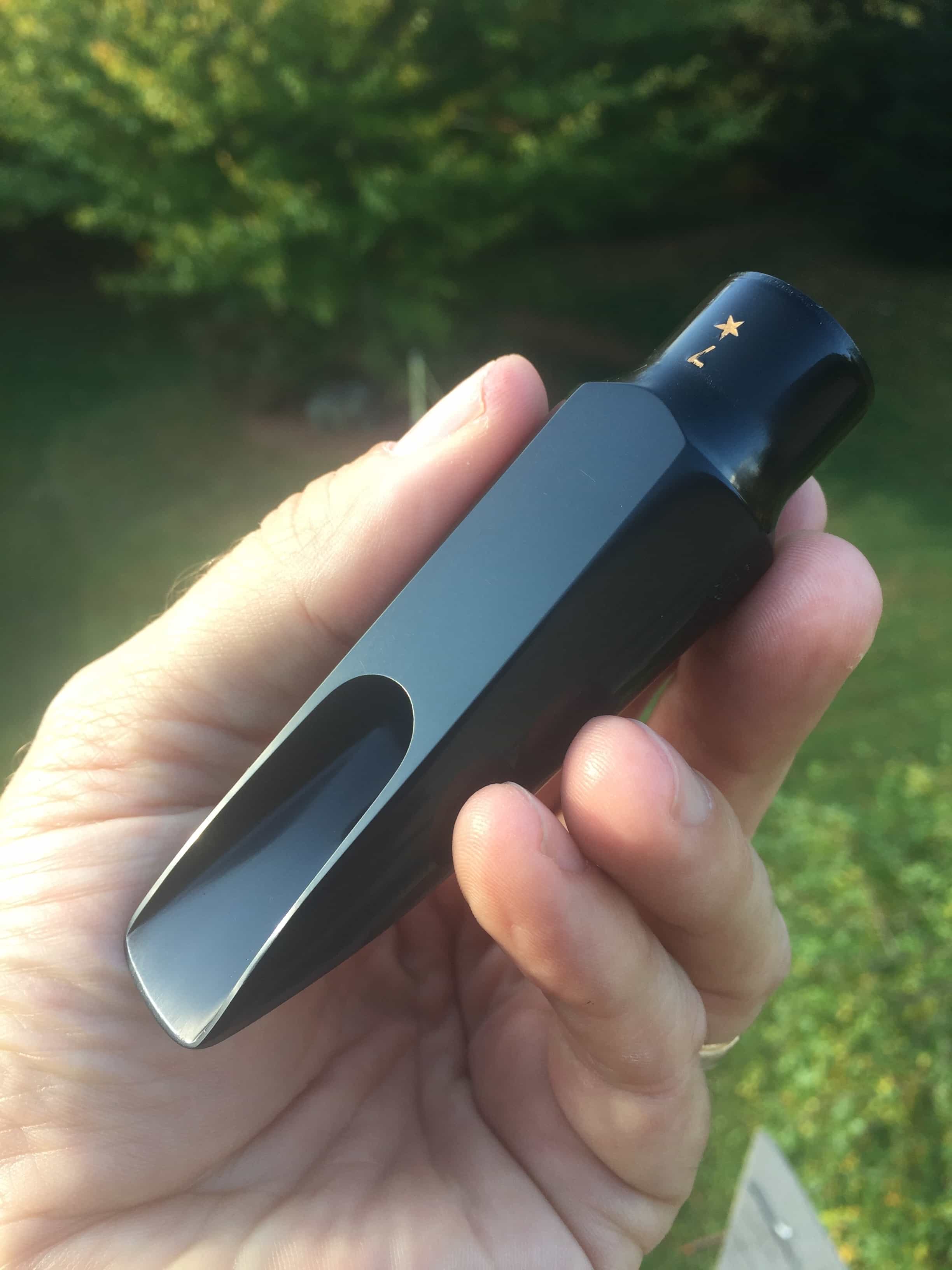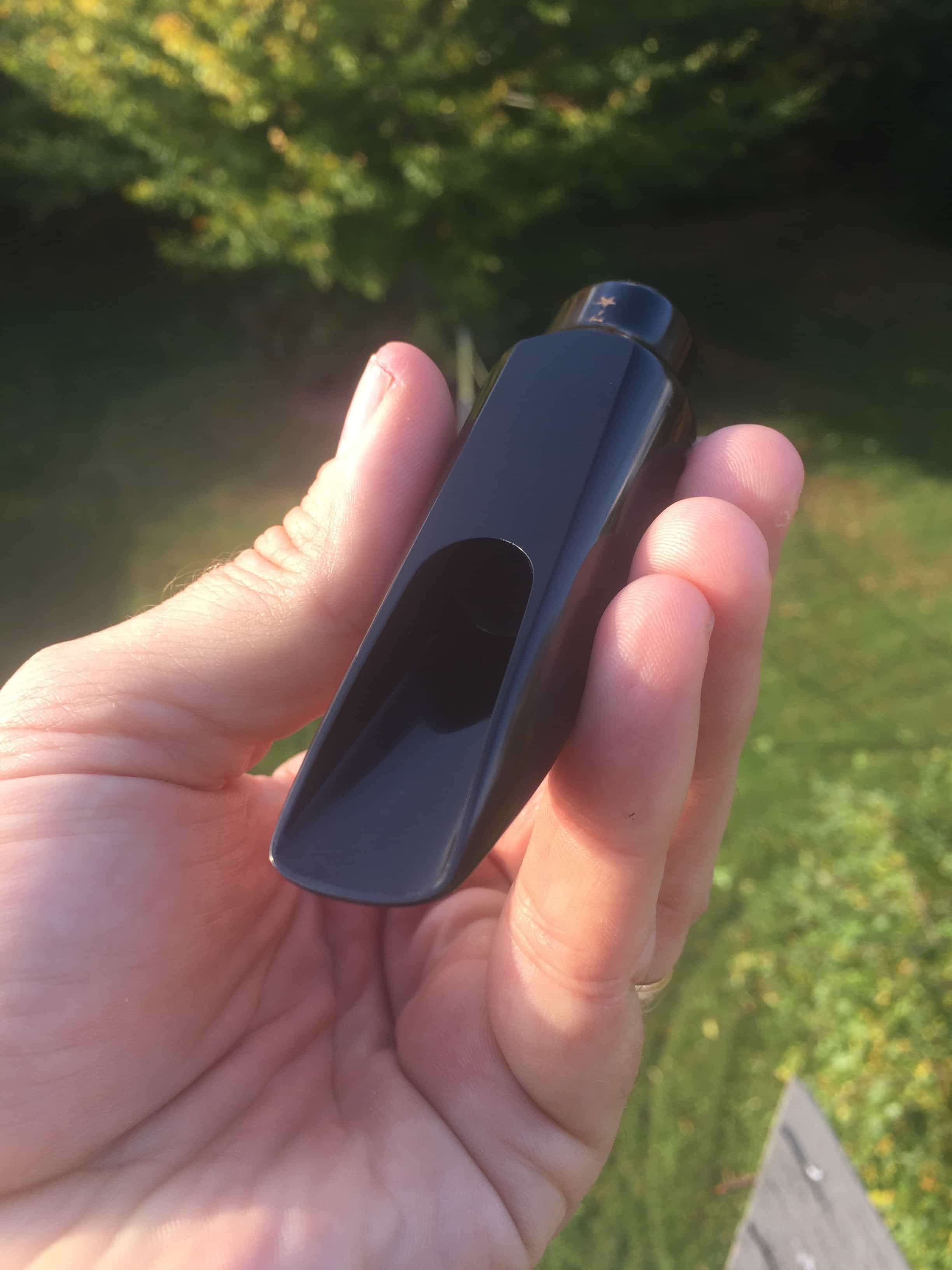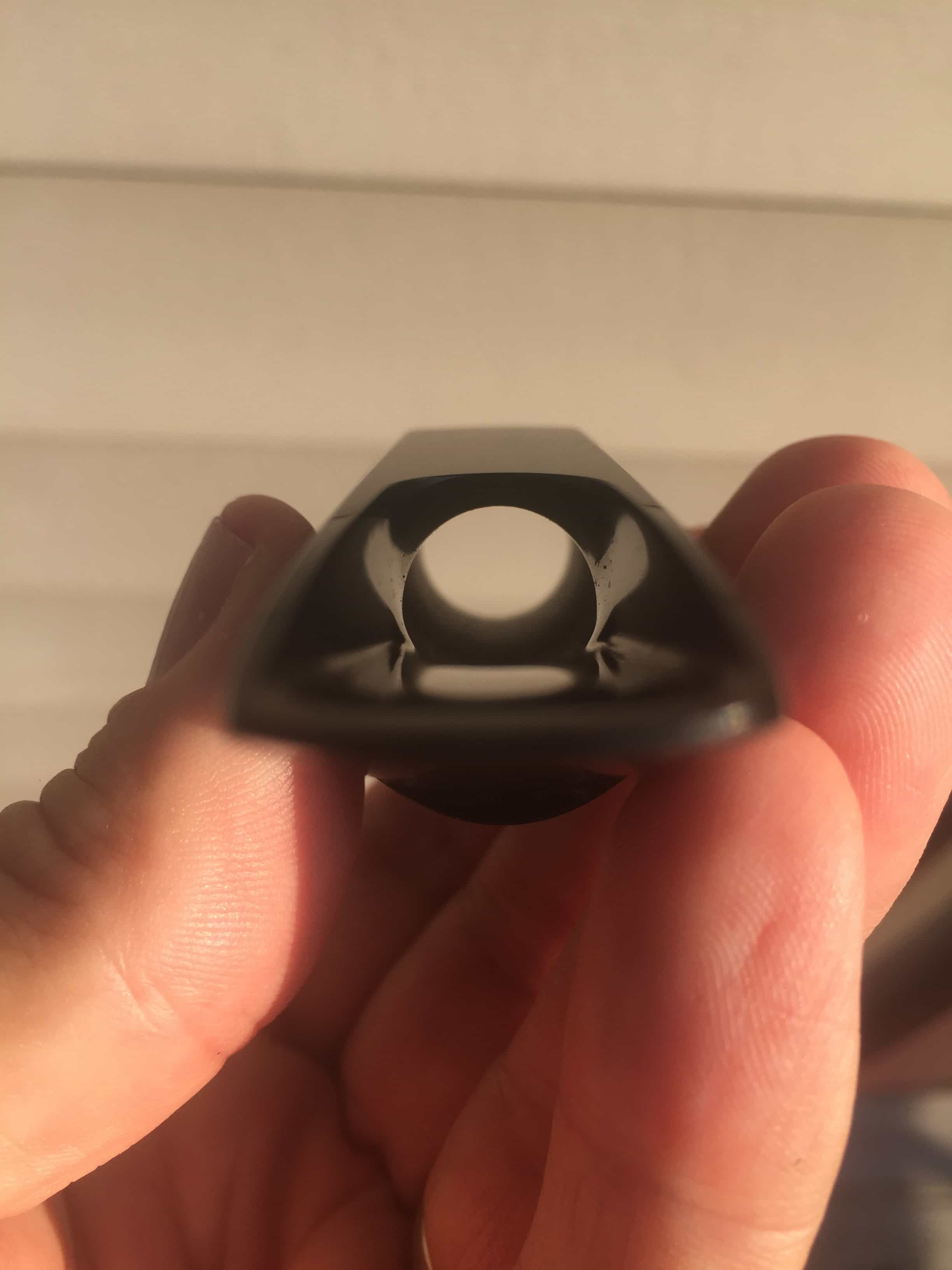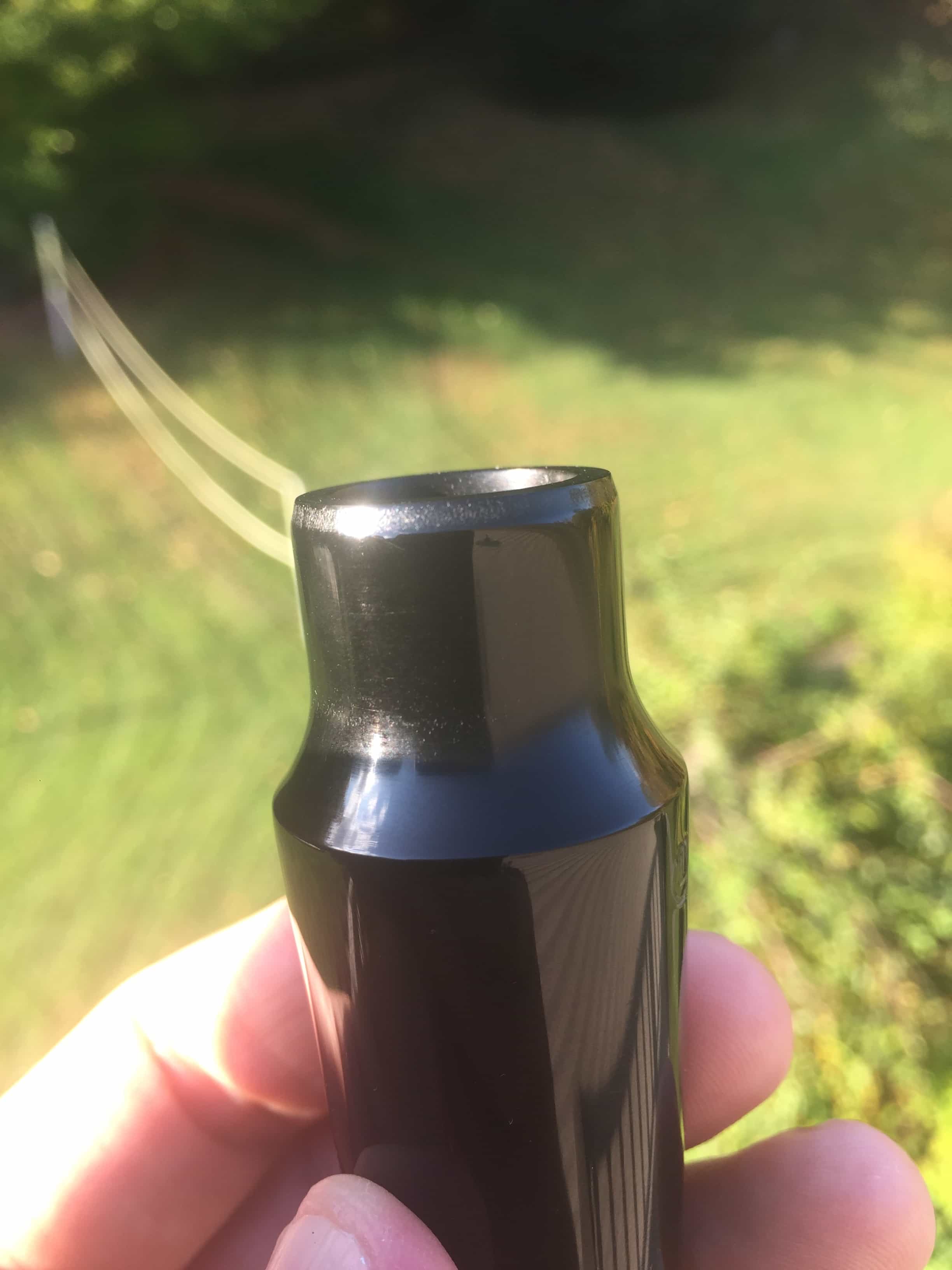Today I am reviewing a new mouthpiece from Jim and Paul Corry over in the UK. They are the owners of Corry Bros Saxophone Mouthpieces. As happens regularly on my site, someone contacted me and asked if I could review some of the Corry Bros sax mouthpieces. I had never heard of them but after checking out their website I was interested in checking out the sax mouthpieces they were producing. I contacted them and they were nice enough to send me one of their Mesa tenor saxophone mouthpiece in a 7* tip opening to check out and perhaps review.
Corry Bros Mesa 7* Tenor Saxophone Mouthpiece
Here’s the description of the Corry Bros Mesa tenor saxophone mouthpiece from the Corry Bros website:
The MESA model is the flagship piece in our ebonite Tenor range.
This piece is broader in tone than our CALDERA model and offers a slightly darker, more full-bodied voice for today’s tenor jazz saxophonists who are looking for a classic sound with modern playability. It has a larger chamber than the Caldera model and it’s sound and color reflects this.
100% handmade and hand finished from the finest German ebonite, this mouthpiece displays as much depth and presence of sound as would expect from a great tenor mouthpiece.
This is a very responsive and flexible mouthpiece allowing crisp articulation and ease in the altissimo, yet with less upper partials in the overall tone.
Corry Bros Mesa Tenor Saxophone Mouthpiece Box
The Corry Bros Mesa tenor saxophone mouthpiece came in a wooden box that you can see above. Inside the box the mouthpiece was protected by a soft velvet like bag and was also wrapped in plastic inside the bag. The mouthpiece is pretty subtle as far as markings or engravings. It has a small CB logo engraved on each side of the mouthpiece and 7* engraved on the bottom side of the shank. The shank has a smooth beveled edge to it that is nice.
The first thing I noticed about the Mesa tenor mouthpiece was how shiny and smooth it was. I think it is one of the shiniest hard rubber sax mouthpieces I have ever seen. (whoever has the job of buffing these at Corry Bros takes their job very seriously!) The table, tip, rails, baffle and chamber look very even and precise. The baffle looks like it angles straight down to the chamber where it ends with a smooth bullet shaped indentation in the center of the baffle at the bottom. I see a slight rollover near the tip rail but it is so slight that it is really hard to make out with the eye. The sidewalls are straight and are angled in slightly as they head towards what I would call a small chamber opening. Inside the chamber it opens up into what looks like a medium chamber after the opening.
Corry Bros Mesa 7* Tenor Saxophone Mouthpiece
One thing I noticed about the Mesa tenor mouthpiece as I went to put a reed on it, is that it is smaller in diameter than most other hard rubber tenor sax mouthpieces. All of my regular hard rubber tenor mouthpiece ligatures were way too big for the Mesa mouthpiece. I found some alto ligatures that fit perfectly though. A Francois Louis Ultimate alto sax ligature fit nicely and that is what I used on the recordings below. A Vandoren Optimum alto sax ligature also fit but it would only slide about half way down the reed and many times I like to put my ligature towards the back of the saxophone reed so I went with the Francois Louis ligature. I also have some generic metal alto ligatures that fit nicely also.
Corry Bros Mesa 7* Tenor Saxophone Mouthpiece
I found the Corry Bros Mesa tenor mouthpiece to respond best for me with Rigotti Gold 3 Light Reeds. I tried a bunch of Rigotti Gold 2 1/2 reeds of different strengths but the 2 1/2 reeds just felt too soft for me. I also tried some Rigotti Gold 3 Medium, 3 Strong and 3 1/2 Light reeds that all played really well also but I felt like my middle D got a bit stuffy sounding with the harder reeds so I went with the Rigotti 3 Light reed.
The first clip below is with one Rigotti Gold 3 Light reed and to me sounds darker than the second clip that is on a different Rigotti Gold 3 Light reed. You wouldn’t think there would be a big difference between two of the same size saxophone reed but you know how reeds can be. I wanted to include both clips because I think they capture slightly different aspects of what the Mesa mouthpiece can do and sound like. The second clip was made the next morning after I had a big mug of coffee. Hence, I have more energy, am blowing harder and going into the altissimo a bit (which I didn’t do on the first clip) and am just generally hyper. Think of the first clip as mellow Steve and the second clip as wired Steve………
Corry Bros Mesa 7* Tenor Saxophone Mouthpiece
On the non-coffee clip, I feel like the tone is full and rich but has less of the upper partials in the tone like the Corry Bros websites description of the Mesa. I think the tone is very even and buttery throughout the range of the horn. I could get plenty of volume out of the Mesa tenor mouthpiece but I felt like even at louder volumes the tone didn’t increase substantially in brightness like many mouthpieces do but just a bit.
The beak of the Mesa mouthpiece feels to be at a similar height as the beak on my EB hard rubber Otto Link tenor mouthpiece. At first it felt high because I have been playing a Saxscape slimline Live mouthpiece and before that the 10mFan Showtime which have lower beaks to them. I compared it side by side with my Otto Link and it looks and feels to be very close in height though.
Even though the height looks the same, because the Mesa has a smaller diameter, the width is thinner than most hard rubber tenor sax mouthpieces. It’s not a big deal but when I first started playing it, I thought it felt a bit different in size than other hard rubber tenor mouthpieces. I think because of this, at times when I got tired, I started leaking air out of the corners of my mouth on either side of the mouthpiece. At first I was confused why this was happening but then realized it is probably because the mouthpiece is thinner and I am used to playing a wider hard rubber tenor mouthpiece. I’m fully confident that this can be easily overcome by getting used to the mouthpiece as you practice so I wouldn’t let this be a concern.
Corry Bros Mesa 7* Tenor Saxophone Mouthpiece
On the second clip, I am simply playing on a different Rigotti Gold 3 Light reed after that big cup of coffee and I think the difference is pretty easy to hear. The tone is a bit brighter and more powerful to my ears. It still keeps those upper partials in check I think but I’m playing a bit more aggressively so you can hear the difference in volume. I think in the first clip I am playing at like 60% and on the second clip I am trying to play more at about 80% for much of it.
The altissimo is easy to get and I think is very pretty sounding. Altissimo on many sax mouthpieces can get really bright but the Mesa saxophone mouthpiece can have an almost classical altissimo sound which is nice to be able to pull off if you wish to.
As is my custom lately, I offer each clip with reverb as well so you can hear how the mouthpiece might sound while playing in a big hall, bathroom, garage, parking garage, glass gazebo or under an underpass or bridge on the freeway. (All places I have practiced at times……..)
Corry Bros Mesa 7* Tenor Saxophone Mouthpiece
I think Jim and Paul Corry at Corry Bros mouthpieces have done a great job coming up with an original design and creating a beautiful great playing mouthpiece with the Mesa tenor saxophone mouthpiece. Well done guys! If you are interested in the Mesa tenor saxophone mouthpiece you can find out more information at CorryBros.com.
If you try a Corry Bros Mesa tenor sax mouthpiece, I would love to hear what you think in the comments below. Thanks, Steve
Corry Bros Mesa Tenor Saxophone Mouthpiece-Rigotti 3 Light Reed-Dry Recording
Corry Bros Mesa Tenor Saxophone Mouthpiece-Rigotti 3 Light Reed-Reverb
Corry Bros Mesa Tenor Saxophone Mouthpiece (after a big cup of coffee)-Rigotti 3 Light Reed-Dry Recording
Corry Bros Mesa Tenor Saxophone Mouthpiece (after a big cup of coffee)-Rigotti 3 Light Reed-Reverb










I think it has a great core sound. There’s some nice complexity to the overtones. Very smooth and even from low to high.
Before reading, I always listen first so I am not influenced by your opinion; I immediately thought of a certain resemblance to the Traditional II mouthpiece of Ken Okutsu; then when I read “buttery” I thought I had a right opinion; am I wrong or there is a certain resemblance in the sound and the sensation of playing it with the mouthpiece Ken Okutsu Traditional II?
Great mouthpiece, I like it!
Giuseppe, I don’t think so. The Okutsu Traditional II is quite a bit brighter than the Corry Bros Mesa mouthpiece. The Okutsu was recorded in a huge room with natural reverb that would make comparing it to this recording difficult I think. I haven’t played them side by side but I’m pretty sure the Okutsu is brighter. Steve
I have not, even, listened to the Okutsu to compare it with this; I went to memory; pity that I was wrong!Thanks,
Giuseppe.
One of the best pieces you’ve sounded on ! Interesting the edge without shrillness.
Hi Steve, how does the Mesa compare to your impressions of the 10mfan Black Widow? Or the 10mfan Classic? I can go somewhat darker or brighter on my BW, but I really like your sound on the Mesa. Any further thoughts you can add? Thanks.
Dan, The Mesa is totally different than the 10mFan Black Widow. The BW gets it’s power and brightness from that high baffle. The Mesa gets what power or brightness it has from the smaller chamber. I remember the Mesa as having a much darker tone than the Black Widow but it still had a nice focused tone to it. If you dig it then it might give you a nice change from what the Black Widow gives you. To me the Mesa is more in the spectrum of tone of a great Selmer Soloist mouthpiece. It is a bit different than a Soloist but I would say it is in that ballpark of tone but has a bit more power because of the higher baffle than Soloists usually have. Hope this helps, Steve
Thank you Steve. I appreciate all you do to promote & encourage players and entrepreneurs that have a passion for saxophones. You are in my prayers for continued good health and many more years of music.
Hi Steve, this a great mouthpiece and yes it is similar to a Selmer Soloist Short Shank. I just had a SSSS C* refaced by EG to an .85 I have been playing it for the last two weeks and loving the great work Erik did. Then just last night the thought came to mind that the CB Mesa had a similar vibe. So today I have been playing this 7* Mesa that I purchased from you. I love it. Just a joy to play being so even, accurate and versatile. It gets a 9/10 from me. Thanks for the mpc and your great website! All the best.
Sounds very close to a a Selmer Soloist Shortshank, but it really has a thing of its own. I like the sound very much. When I listen to music, the test for me is, do I want to hear more of that sound? If the answer is yes, it means I like what I hear, and in this case the answer is yes. I love Selmer Soloists and have several vintage refaced ones, and a number of replicas. I would like to try one of these. Steve, you mentioned that ligatures are hard to fit on this? Besides the FL alto ligature, what others might suit the Mesa?
Also, thank you for all the years of reviewing all those mouthpieces!